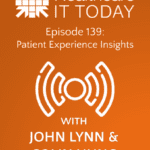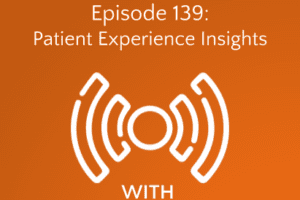 The following is a guest article by Anton Nazarkin, Global Development Director at VisionLabs.
The following is a guest article by Anton Nazarkin, Global Development Director at VisionLabs.
Healthcare institutions seek one key thing: delivering the greatest patient outcomes possible. Often technology is relied upon to reduce strain on resources and deliver better patient outcomes. Yet one emerging technology is offering new exciting opportunities to do this: facial recognition.
The scope of facial recognition’s impact on the healthcare industry is vast, spanning insurance fraud and improved admin systems, all the way to reducing drug crime. Facial recognition’s impact should be examined in full in order to help institutions achieve the goal of higher standard of care services, whilst being efficient and effective with resources.
A Seamless and Fraud Free Check-In
From unlocking our phone, to paying for groceries and checking our online banking. Using facial recognition was once an extraordinary leap for these activities, now it is an everyday part of our lives.
The introduction of facial recognition to the patient check-in process is a natural evolution for all consumers – and one that many are already demanding. Facial recognition can provide three key benefits to check-in:
- An improved customer experience
- Efficient patient processing
- Protection from insurance policy fraud.
Healthcare fraud is estimated to cost around $54 billion a year in America. Unfortunately, this tab is picked up by the healthcare industry and by the patients. Leveraging facial recognition technology in a hospital system can drastically reduce these types of fraud losses, and therefore improve patient outcomes.
Facial recognition technology ensures the individual interacting with the camera is who they say they are. In this instance, it can be confirmed that the policyholder is the individual who accesses the healthcare insurance therefore eliminating the possibility of fraud or human error. The most significant consequence of this is the delivery of better patient outcomes through improved allocation of financial and human resources.
Improved Security Leads to Better Outcomes
Poor security can lead to negative patient outcomes as resources are directed away from patient care. For example, one medical center in San Jose, CA lost equipment valued at more than $11 million in four years due to theft and loss. Inadequate security led to unexplained loss and theft, with the unfortunate consequence of resources being diverted away from delivering the best patient outcomes possible.
Facial recognition means that any business, be it retail, financial services, public safety or healthcare can be almost virtually guaranteed as access is only granted to approved and verified individuals.
The leading facial recognition providers are nearly impossible to spoof – even if spy films may have you believing otherwise. Therefore, even planned intrusions and attempted access to secure areas will be prevented. The unparalleled security of facial recognition can significantly reduce healthcare crime and allow for institutions to garner large immediate and long-term savings.
Unauthorized Tech Access is no More
The misuse and inappropriate access to healthcare technology is incredibly costly. Technologies could be rendered out of order, or require technical repair due to improper use without the specialist training requirements. Facial recognition technology should be integrated into healthcare technologies, such as MRI machines, to ensure the user has the required training and the minimum-level of clearing needed to authorize usage. Therefore, large amounts of improper use leading to damaged machines will become a thing of the past. This saves healthcare institutions vast amounts of money, whilst increasing the longevity of the technologies.
Monitoring Unexplained Drug Loss
79% of Canadian hospital drug loss reports are “unexplained losses.” Not only does this amount to huge financial losses, but also demonstrates a lack of traceability.
Facial recognition provides the much needed application of real-time monitoring of drugs and other pharmaceutical substances. Providing lockers that require a log-in, or some other similar equipment, alongside facial recognition would ensure that access to these medications is only granted to approved staff members. Moreover, this would provide hospital management with the necessary, but not intrusive, data to keep an account of which staff members access certain drugs.
Hospital management are then able to recover ‘lost’ and misplaced drugs, whilst also preventing misuse at source. Another positive outcome of this technology is the supply of drugs needed for patients remains high, and the highest standard of care can be delivered.
Facial recognition enables better patient outcomes. It allows patients to be served efficiently and effectively through improved security, drug and machine monitoring, patient check-in, and fraud prevention. The drastic financial and human resources saved can also be redirected back into the institution to maximize the level of care.
**It does not imply any recommendation or endorsement by the National Institute of Standards and Technology.













